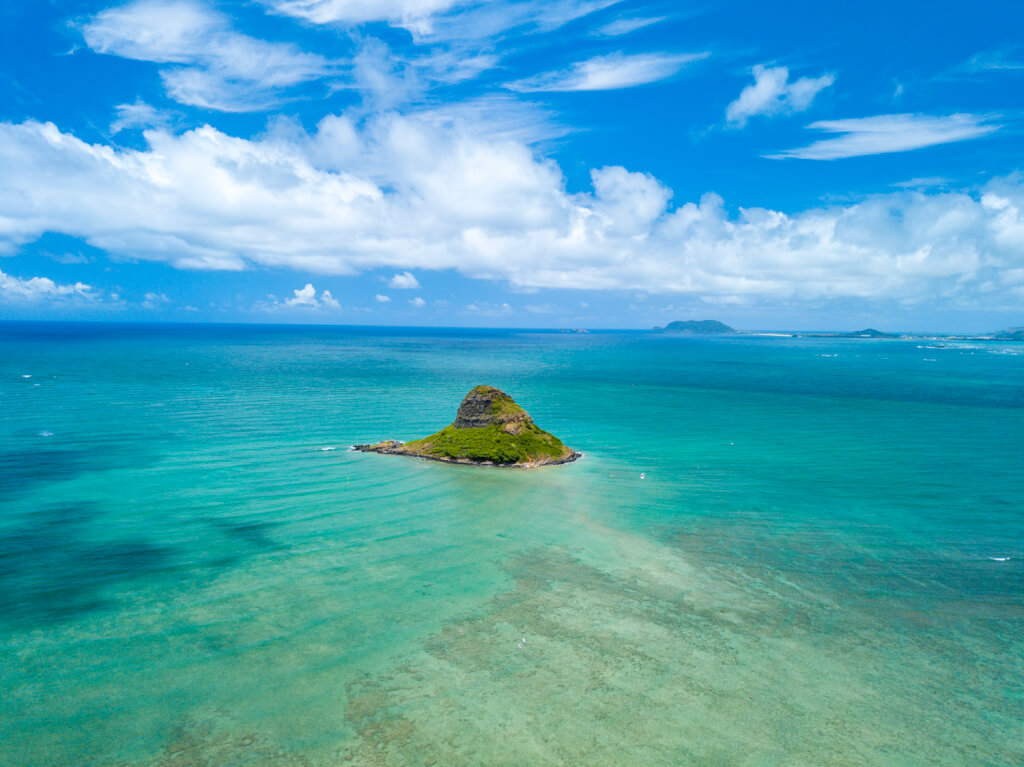Doing it for the Gram combined with a poor understanding of the environment, failure to do research, and not understanding one’s abilities is the reason why offshore rescues are up on Oahu. And that has officials pleading with the public to think twice before heading out.
Hawaii’s crystal clear, warm waters are a major part of our draw. However, our inviting beaches and coastal environments often belies hidden dangers, some of which are readily apparent to locals, while others aren’t always that obvious. That’s why it’s important to know what you’re getting into when heading out on offshore activities, perhaps even more so than when going hiking.
Offshore Rescues Are Up On Oahu
According to Hawaii News Now, City & County of Honolulu lifeguards are reporting that offshore rescues are up on Oahu. Many of these rescues are centered around popular offshore islands, such as the Mokoluas in Kailua and Mokolii (Chinaman’s Hat) in Kaneohe. The Mokoluas have been especially problematic given their proximity to the launch site for kayak rentals on Kailua Beach. Indeed, Ocean Safety officials state that the majority of rescue calls come from kayakers, specifically kayak renters.
The major issues rescuers are encountering at the Mokoluas are exhaustion and injuries. Exhaustion usually occurs because kayakers don’t take into account currents, waves, or winds that day; their own physical abilities; or some combination of these factors. Injuries most often occur once kayakers get to the islands, particularly when they jump off rocks on the backside of Moku Nui. The jagged rocks of the area, unknown submerged obstacles, and questionable water depth often result in broken limbs, necessitating a rescue from the island.
Likewise, out at Mokolii, paddling out to the island can be more challenging than it seems. Further, during especially low tides, you can walk out to the island from shore. However, if you don’t time your adventure out properly, you can get stuck there when the tide comes back in. People also like to hike to the top of the island, which creates fall risks that can result in broken bones or worse.
What You Can Do
What can you do to ensure that you don’t contribute to the fact that offshore rescues are up on Oahu? First and foremost, make sure you know your limits. As with hiking, if you’re not someone that goes kayaking regularly or aren’t at least regularly active, then er on the side of caution – don’t try to paddle to one of these islands, which are often around a mile offshore.
However, if you decide that you are likely capable of paddling that distance, be sure to check the weather conditions for the day. If it’s windy, if the surf is up, or if the currents are particularly strong, maybe go out on a different day or plan on staying closer to shore.
If you aren’t sure about conditions at a particular location, ask around! If there are lifeguards on duty, they’ll be your best resource. However, if there aren’t any lifeguards, ask locals in the area or even your hotel concierge.
Final Thoughts
Social media is a great way to discover new things. But it’s also a scourge for people that live in places like Hawaii. Places that used to be for locals only are now overrun with visitors, and, of course, those visitors are getting often getting into situations that they aren’t equipped to handle. So, please, be honest about your capabilities and do your research before heading out. Please don’t contribute to the fact that offshore rescues are up on Oahu. Not only is needing rescue dangerous for you, but it puts our first responders at risk, too.

